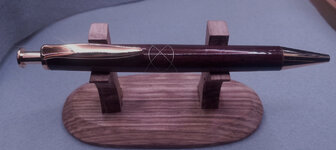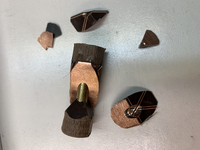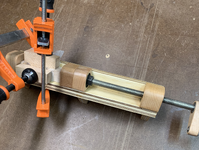WTBM
Member
My first celtic knot . I'm not sure what the wood is, the pen kit is a longwood click pen . I learned a lot with this one , my knots did not come out even, but it will be ok for me to use at my desk . Since it will be a daily use pen for me i didnt go to overboard with the finish



